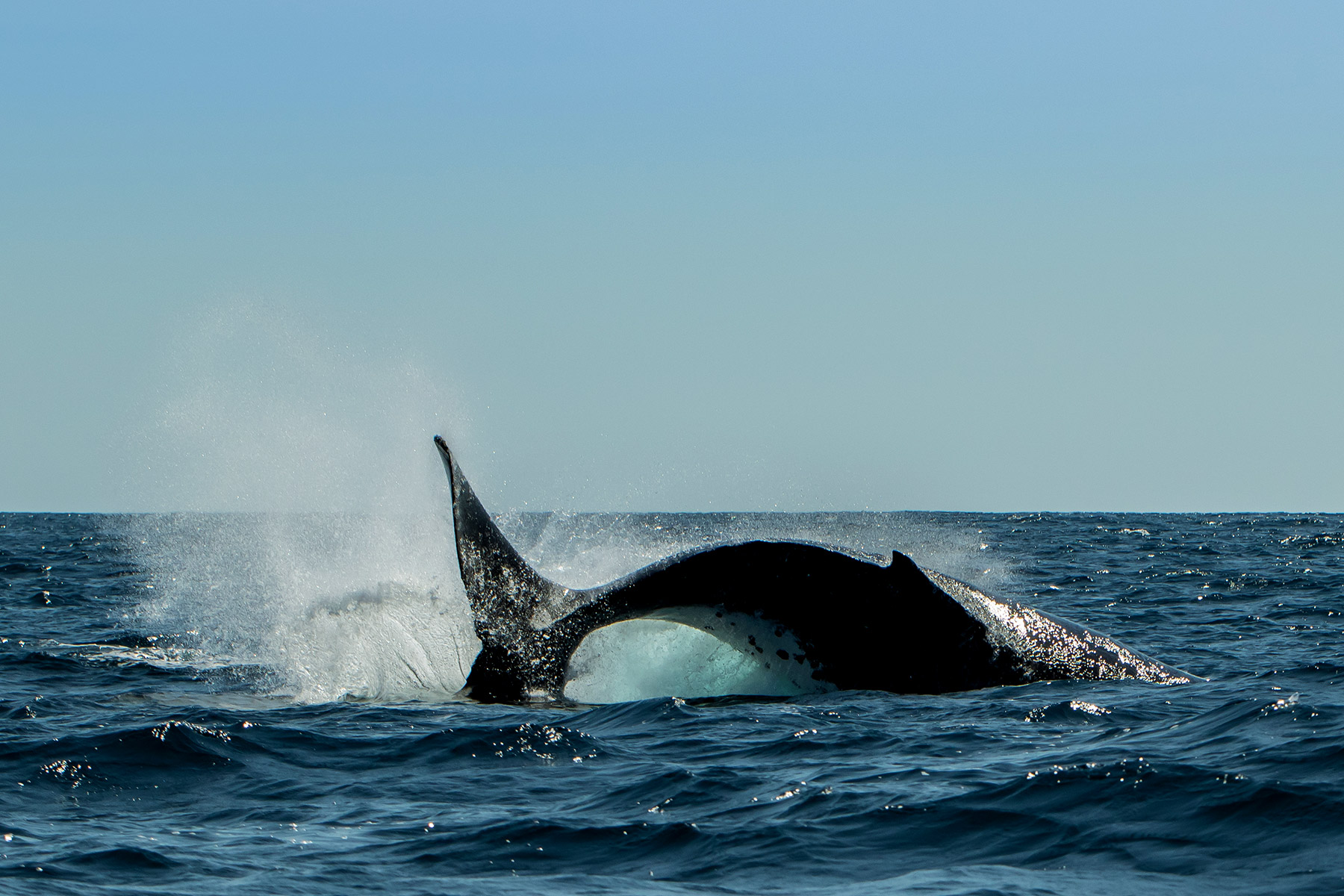As interest in whale watching has risen, a conversation has developed around what is responsible whale watching. So what exactly is it? And what should you be looking out for from a whale watching operator?
Whale watching, as an organised activity, dates back to the 1950s in the U.S. It now happens in more than 120 countries globally.
It’s estimated that circa 15 million people take part in whale watching every year, going out in boats to observe whales (as opposed to shore-based whale watching).
First cause no harm
The purpose of whale watching is to observe whales and dolphins in their natural habitat. The last thing that a whale watching boat should do is interfere with a cetacean’s natural behaviour, including the ability to feed, rest and rear their young.
Keeping a respectful distance and not encroaching on a whale’s space is really important so that the animal is not stressed. It also ensures no collision occurs between boat and whale. It’s vital that no physical contact (touching or feeding) happens between the whale or dolphin and human observers.
Ultimately, it should be left to the animal to determine the nature and duration of interactions as much as possible.
Keeping things quiet
Whales and dolphins are highly sensitive to noise, particularly because it interferes with their highly attuned echolocation. They use this to communicate with other cetaceans, navigate and pinpoint food sources.
Unfortunately, just as humans have created physical pollution in the world, they’re also creating human-made noise in the ocean. Fishing and shipping levels have effectively doubled in the past few decades, creating something called acoustic smog.
During whale watching tours, it’s important that the noise of vessels is at a very minimum. Ideally, a silent propulsion system is in place rather than a noisy diesel engine.
A study in Western Australia in 2020 found that repeated noise from whale watching boat engines could be affecting humpback mothers and their calves during their long migrations to the Antarctic.
Researchers found that as engine noise went up, the mothers spent less time resting, their breathing increased and they swam faster.

Greater understanding of conservation needs
Responsible whale watching focuses on educating about whales and dolphins, rather than prioritising entertainment for humans. Creating awareness through individuals helps society as a whole to prioritise conserving and protecting our ocean’s cetaceans.
We can all play a practical part in making sure that our ocean is a healthy place. This is for the benefit of marine mammals and also contributes to a healthier earth. Learning more about this during a whale watching trip is a tangible way that whale watching can be a force for good.
Working with communities
At one point in history, the whaling industry was one of the largest industries in the world. Many coastal communities around the world engaged in commercial whaling – mass hunting and killing whales to produce goods for human consumption. Such was the demand for these goods that several whale populations were nearly driven to extinction.
Thankfully, there has been a huge cultural shift in most countries around the world (with the exception of Japan, Iceland and Norway) from looking at whales as purely meat to exploit. Now, the majority of people see the benefits of appreciating these wonderful sentient animals.
Whale watching can bring sustainable employment and tourism opportunities to coastal communities. It also fosters a sense of pride and stewardship amongst the people living there.
Contributing to data on whales
On a pragmatic level, whale watching operators often get to observe the same or different animals over a period of time so are most likely to notice any injured or entangled whales or dolphins, and can raise the alarm for help when needed. Often, whale watching operators collaborate with researchers by sharing sightings or data from their vessels, which is useful for understanding more about how cetaceans live.



